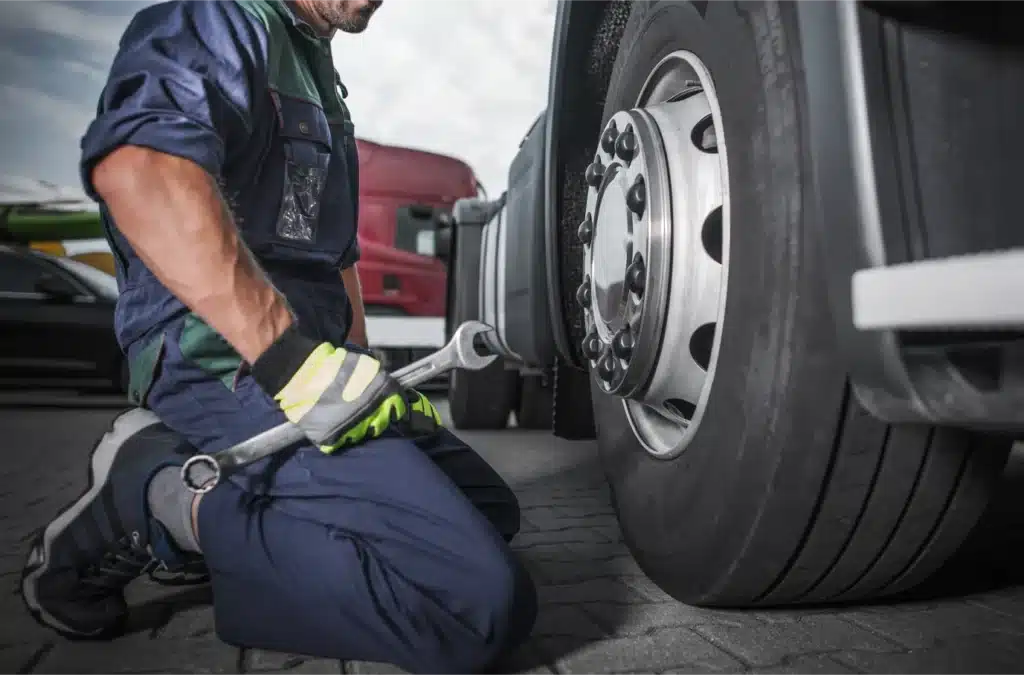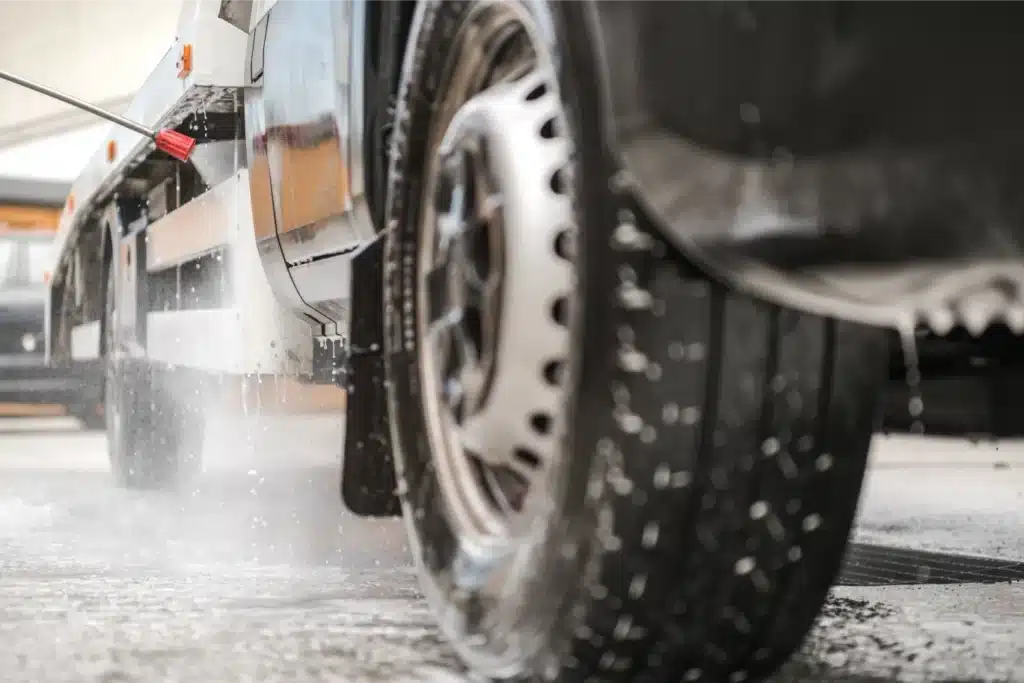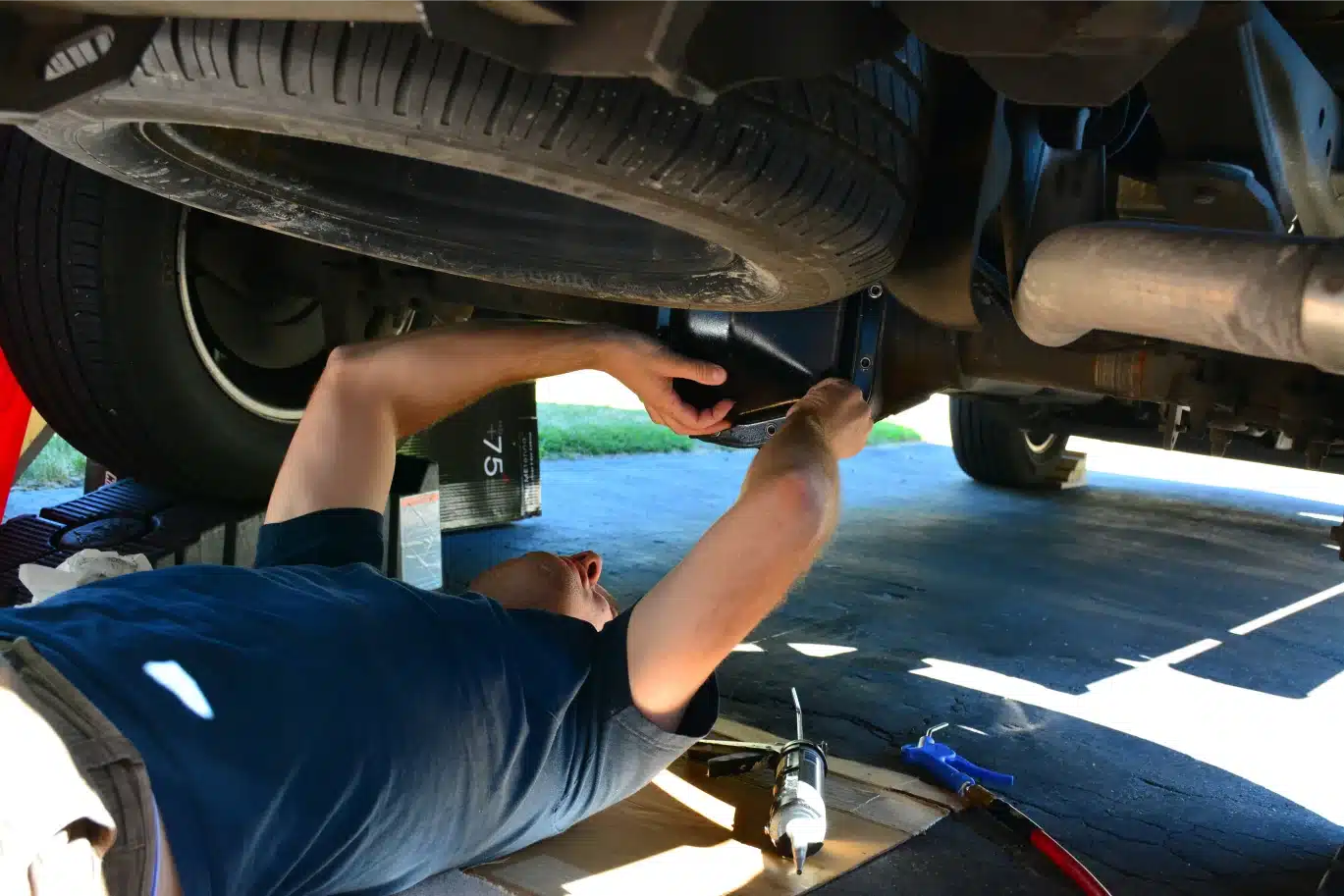A well-maintained utility truck enhances performance, safety, and reliability. By following the maintenance tips to keep your utility truck in top shape, you can prevent unexpected issues and extend the lifespan of your vehicle. Implementing a routine maintenance plan not only improves efficiency but also minimizes downtime and costly repairs. In this guide, we’ll cover essential maintenance tips to help you keep your utility truck running smoothly and efficiently.
Utility trucks are essential for a wide range of industries, from construction and telecommunications to power line maintenance. These vehicles handle heavy loads, demanding terrains, and long hours of operation, making proper maintenance crucial.
Regular upkeep not only extends the truck’s lifespan but also ensures the safety of operators and workers. Neglecting maintenance can lead to expensive repairs, unplanned downtime, and potential safety hazards.
Continue reading to learn how you keep your utility truck in top shape.
1. Use a Regular Inspection Checklist
Routine inspections can help identify issues before they become major problems. Establishing a structured maintenance routine ensures that small concerns don’t turn into expensive breakdowns. Here are key areas to check:
- Tires and Wheels: Tires are the foundation of your truck’s mobility. Inspect them for tread depth, uneven wear, bulges, and cracks. Ensure the tire pressure aligns with the manufacturer’s recommendations, as underinflated or overinflated tires can lead to poor fuel efficiency, instability, and even blowouts. Don’t forget to check the condition of the spare tire.
- Fluids: Proper fluid levels and quality are essential for smooth operation. Regularly inspect and top up engine oil, brake fluid, hydraulic oil, transmission fluid, and coolant. Dirty or low fluid levels can lead to overheating, increased friction, and component failure.
- Battery: The battery powers essential truck functions, including starting the engine and operating electrical components. Check for corrosion on terminals, loose connections, and ensure that the battery is fully charged to avoid unexpected failures.
- Brakes: Fully functional brakes are critical for safety. Check brake pads for wear, listen for squealing or grinding sounds, and ensure brake fluid is at the correct level. Faulty brakes can compromise both vehicle control and operator safety.
- Lights and Electrical Systems: Fully operational lights and signals are essential for visibility and safety. Inspect headlights, taillights, brake lights, hazard signals, and dashboard indicators to ensure they are in working order. Address flickering or dim lights promptly to avoid electrical failures.

2. Maintain Engine and Fluid Levels Properly
Proper engine maintenance ensures fuel efficiency, power, and longevity. Neglecting engine care can result in costly repairs and performance issues. Follow these best practices:
- Oil Changes: Engine oil lubricates moving parts and prevents wear. Regular oil changes, based on manufacturer recommendations, help keep the engine running smoothly and efficiently. Using the right oil type and filter ensures optimal performance.
- Coolant System: The cooling system prevents overheating, which can cause severe engine damage. Regularly check coolant levels and look for signs of leaks. Flushing the system periodically removes contaminants that can clog the radiator and reduce efficiency.
- Hydraulic and Transmission Fluids: These fluids play a crucial role in operating hydraulic lifts and gear shifts. Low or dirty fluids can result in sluggish performance, overheating, or even transmission failure. Inspect fluid levels regularly and replace them as needed to maintain optimal functionality.

3. Keep Your Hydraulic System in Optimal Condition
Utility trucks often rely on hydraulic systems for aerial lifts and other powered equipment. A poorly maintained hydraulic system can lead to sudden failures and safety hazards. Maintain your system by:
- Checking for Leaks: Hydraulic leaks can lead to pressure loss and equipment malfunction. Inspect hoses, connections, and cylinders for any signs of fluid leakage.
- Replacing Hydraulic Filters: Over time, hydraulic filters accumulate contaminants that can clog the system. Regularly replacing filters helps prevent damage and keeps hydraulic components running smoothly.
- Performing Pressure Tests: Hydraulic pressure tests ensure that the system is functioning within safe operating limits. Low pressure can indicate leaks or pump failure, while high pressure might signal blockages.
Are you looking for maintenance tips for bucket trucks? Read the blog post: How to Maintain Your Bucket Truck for Longevity
4. Clean Your Truck and Prevent Rust
A clean truck is not just about aesthetics—it helps prevent premature wear and rust, which can weaken structural integrity. Here’s how to maintain cleanliness and prevent corrosion:
- Wash Regularly: Remove dirt, mud, and debris from the undercarriage and body to prevent buildup that can trap moisture and cause rust.
- Apply Rust Prevention Treatments: Use protective coatings, such as rust inhibitors and wax-based sprays, on metal surfaces to slow down corrosion.
- Store Properly: When not in use, park the truck in a covered or sheltered area to protect it from rain, snow, and extreme temperatures. Cover exposed metal parts when storing for extended periods.

5. Regularly Inspect Safety Equipment and Ensure Compliance
Safety should always be a top priority for utility truck operators. Regularly inspect and test the following:
- Seatbelts and Restraints: Ensure seatbelts are functional and free from wear and tear. Safety harnesses, if applicable, should be inspected for fraying or damage.
- Emergency Stops and Alarms: Verify that all emergency stop mechanisms and audible warning systems are in working order. These components are critical for preventing accidents.
- Regulatory Compliance: Many industries have specific safety regulations for utility trucks. Conduct regular inspections to ensure compliance with OSHA, ANSI, and other relevant safety standards. Keeping detailed maintenance records can help with regulatory audits and inspections.
6. Adjust Your Maintenance Routine to Seasonal Changes
Different seasons present unique challenges for utility truck maintenance. Here’s how to prepare:
- Winter: Cold weather can affect battery performance, fluids, and tire traction. Use antifreeze in the coolant system, check battery health, and store the truck indoors when possible to prevent ice buildup.
- Summer: High temperatures can lead to overheating. Maintain proper coolant levels, inspect belts and hoses for heat-related wear, and ensure the air conditioning system is functioning properly.

7. Know When to Seek Professional Maintenance
Even with diligent care, some repairs require professional attention. Contact a certified mechanic if you notice:
- Unusual Noises: Knocking, grinding, or high-pitched sounds can indicate underlying mechanical issues.
- Excessive Smoke or Fluid Leaks: Persistent smoke from the exhaust or visible leaks can be signs of engine trouble, transmission failure, or hydraulic issues.
- Persistent Electrical or Transmission Issues: If dashboard warning lights stay on, gear shifts are rough, or electrical components malfunction, professional diagnostics are necessary.
For expert assistance, Contact us today for professional utility truck maintenance and service solutions.

